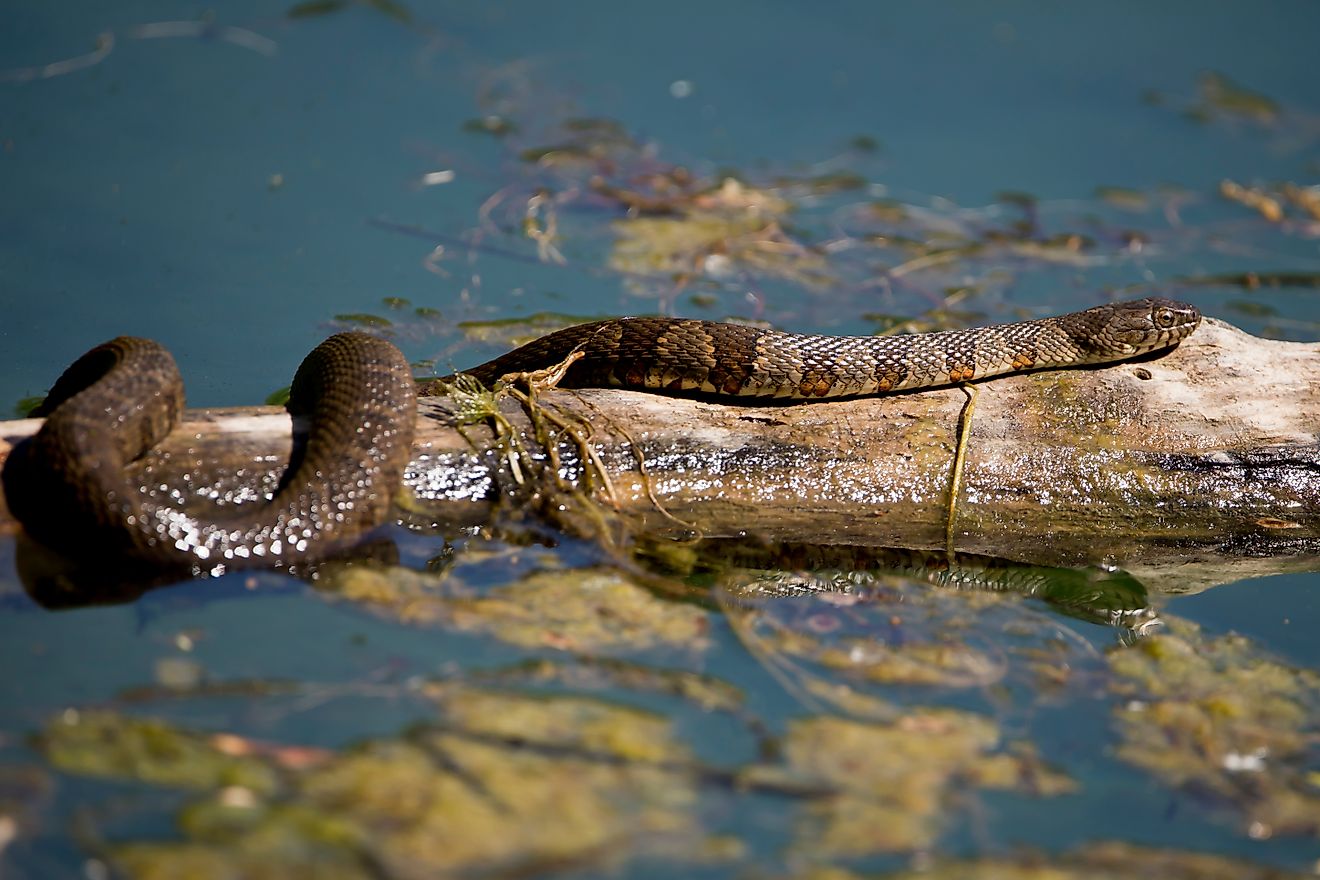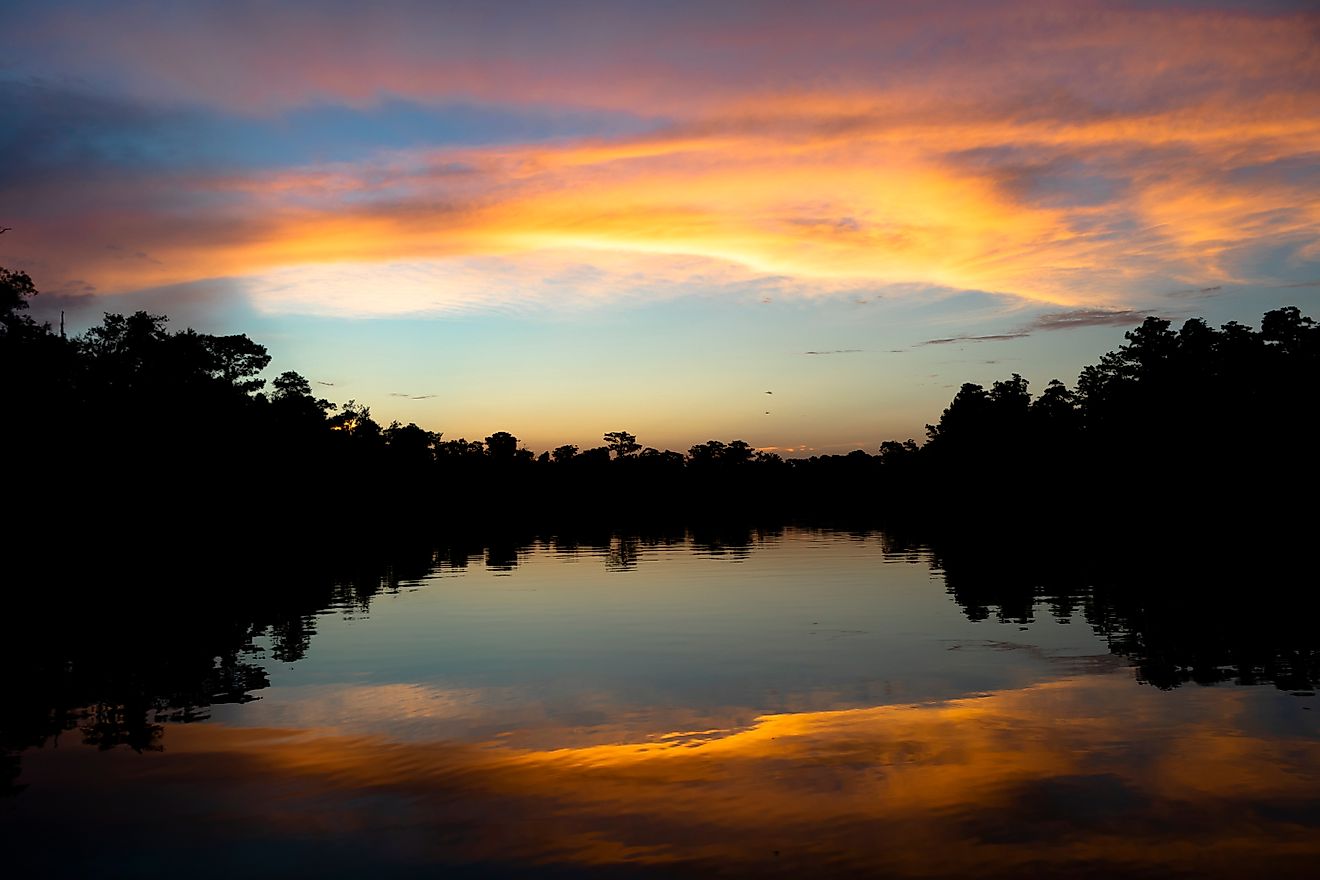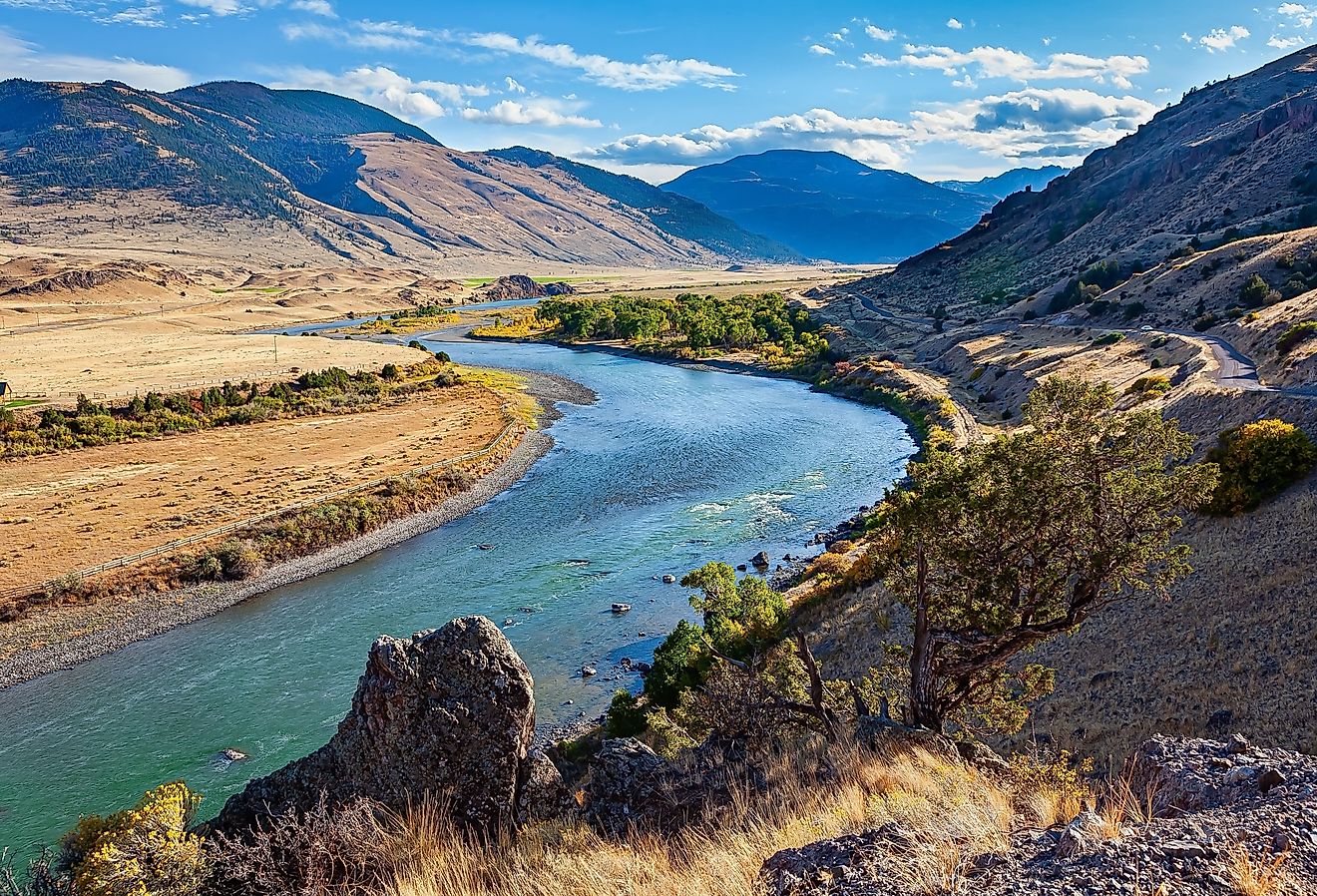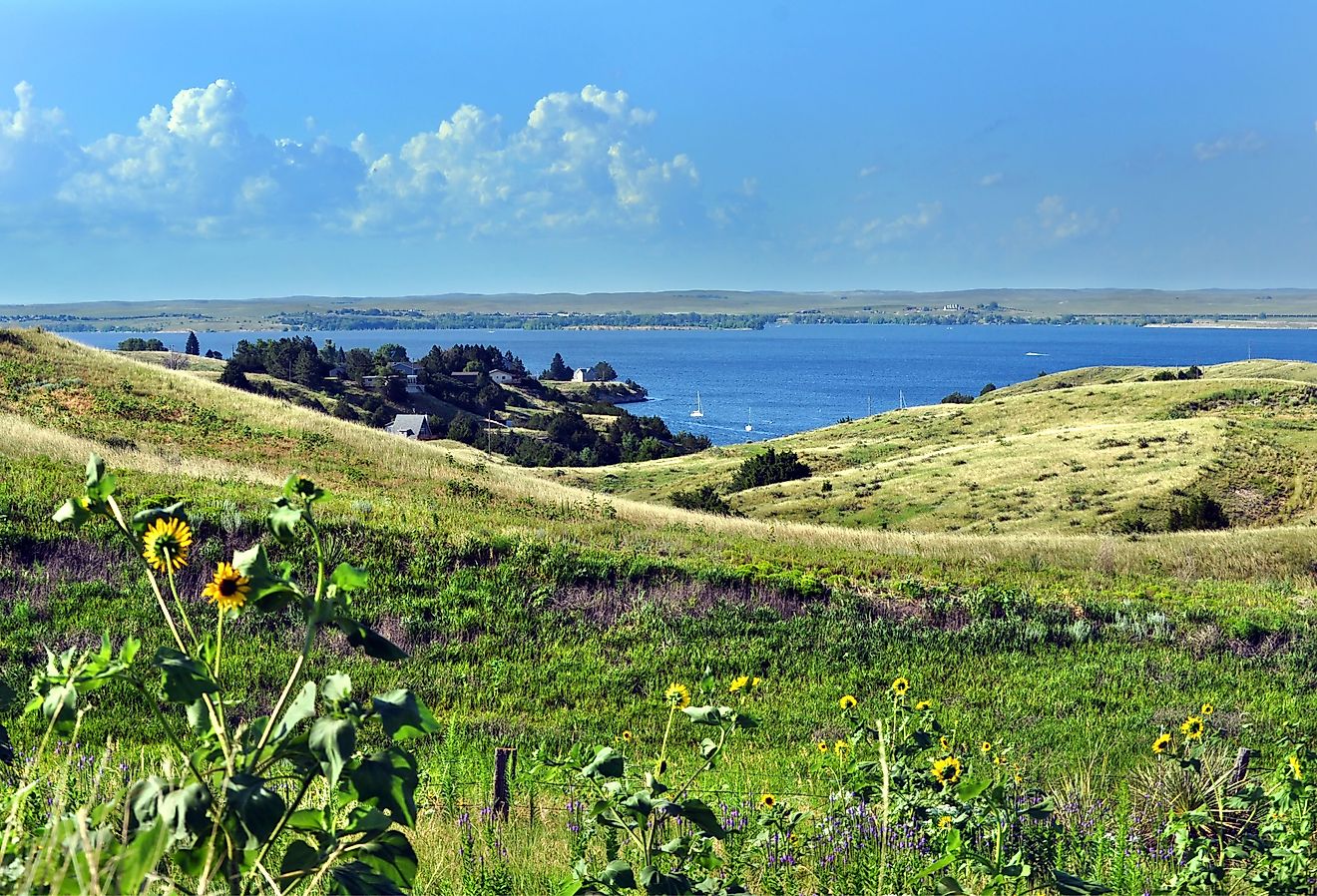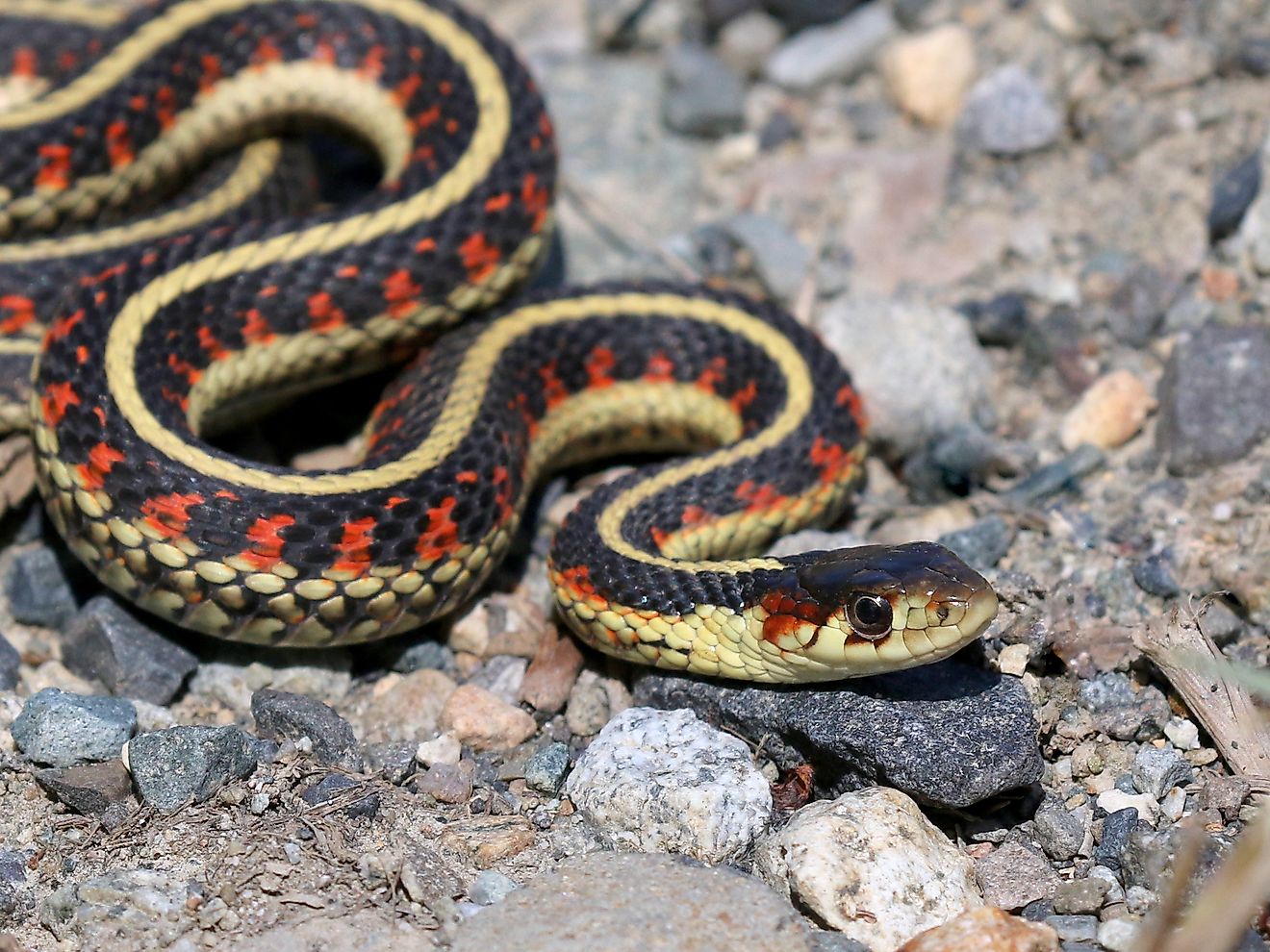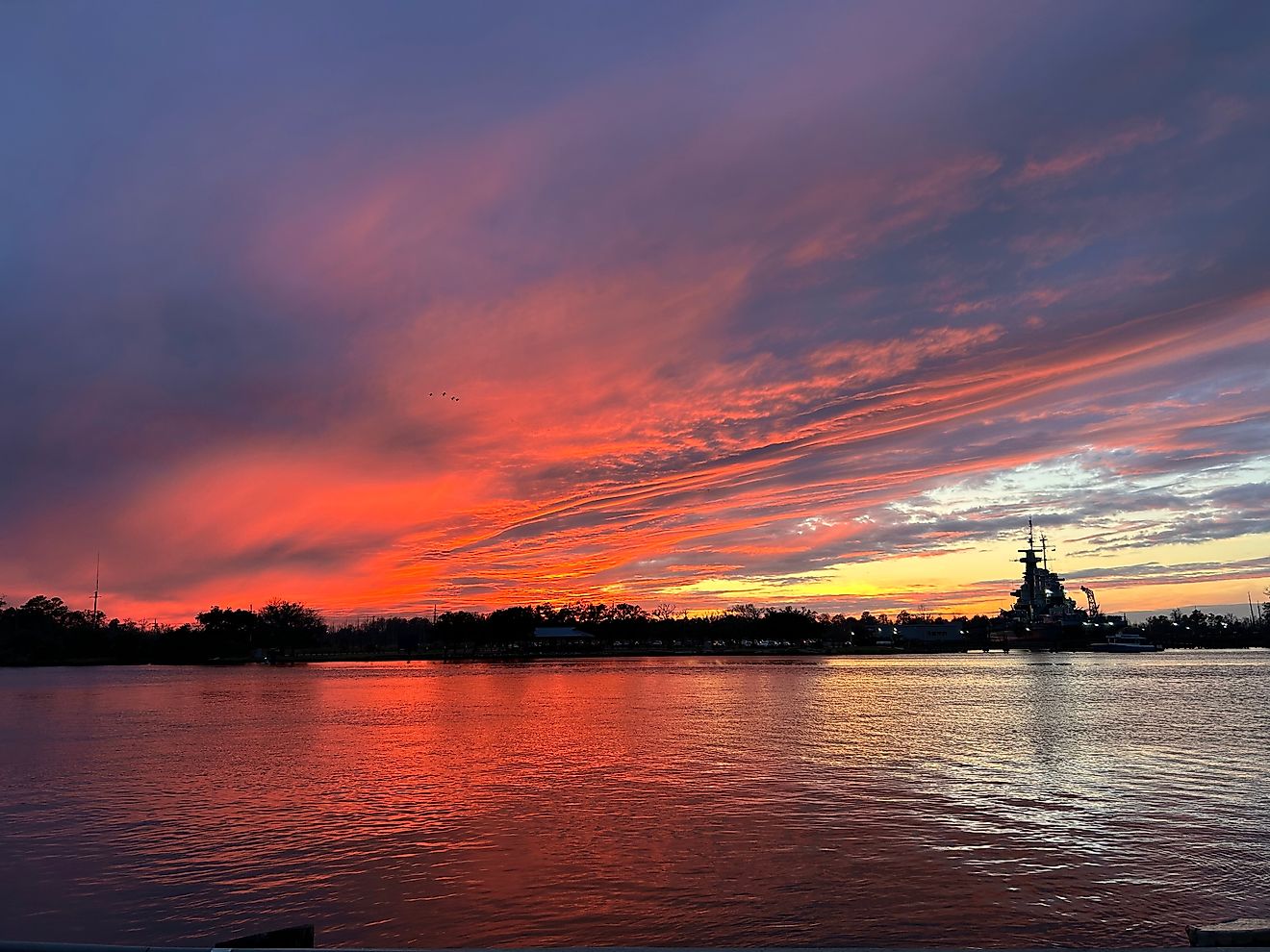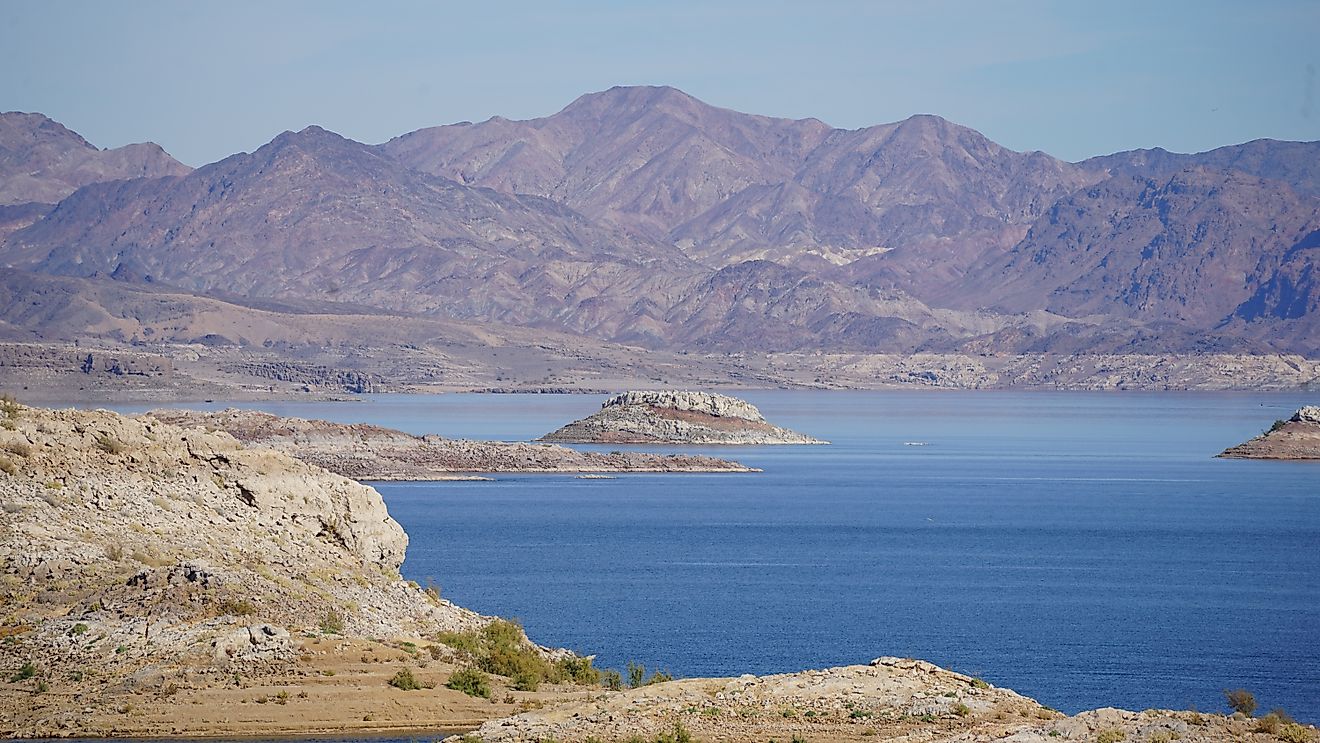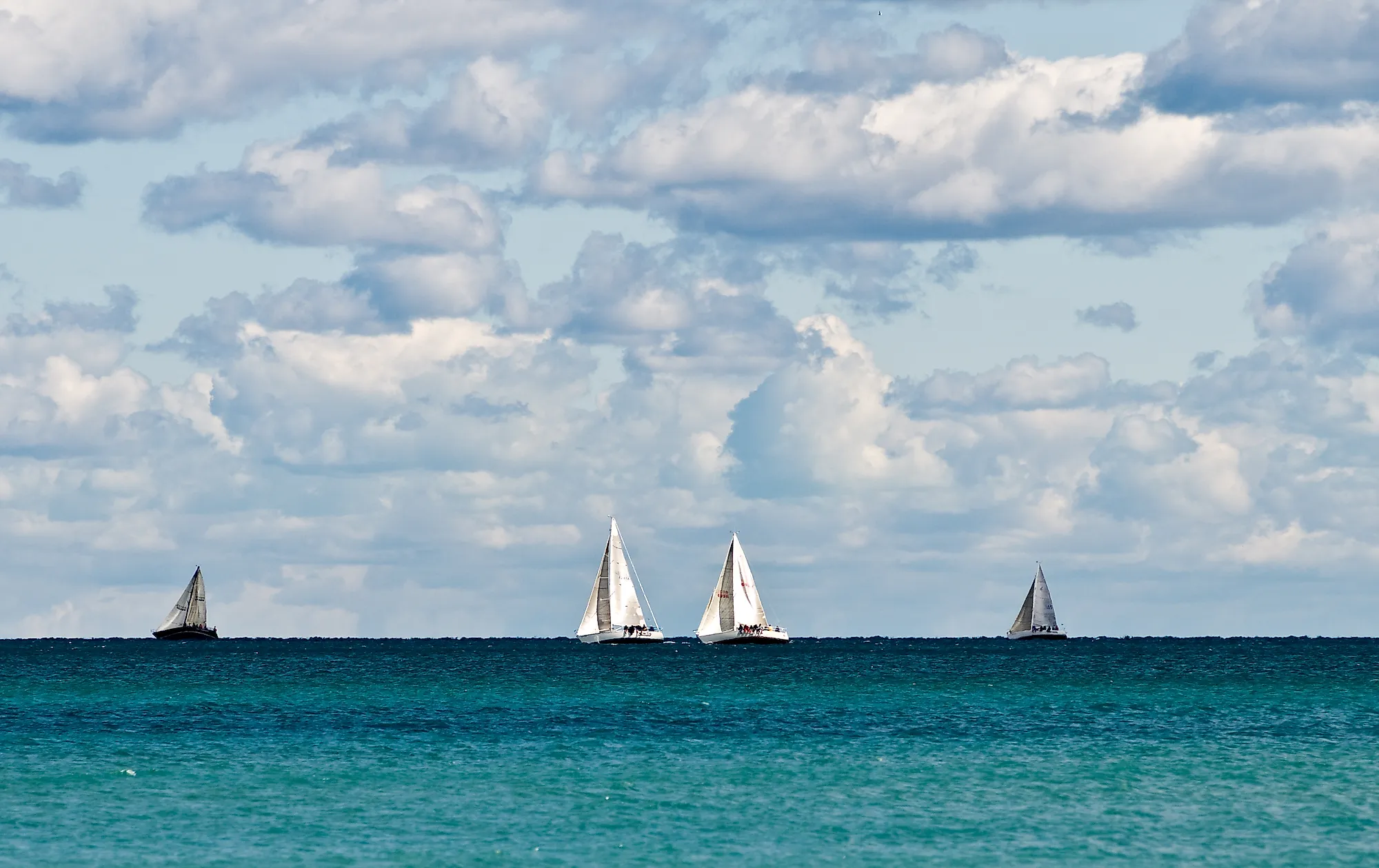
10 Largest Lakes In North America
There are 64 different noted lakes in North America, ranging in a wide variety of sizes, from the tiny to the massive. Overall, though, North America has some of the largest lakes - especially freshwater lakes - in the world. The Great Lakes, so named for their impressive size and volume, are generally the largest such lakes, and make up a connected fresh water system that serves much of both Canada and the United States. in terms of fresh water supply, hydroelectricity, fish, and recreational activities. The following lakes are the top 10 largest lakes (by surface area) in North America.
| Rank | Lake | Area (km2) |
|---|---|---|
| 1 | Lake Superior | 82,100 |
| 2 | Lake Huron | 59,600 |
| 3 | Lake Michigan | 58,000 |
| 4 | Great Bear Lake | 31,000 |
| 5 | Great Slave Lake | 27,000 |
| 6 | Lake Erie | 25,700 |
| 7 | Lake Winnipeg | 25,514 |
| 8 | Lake Ontario | 18,960 |
| 9 | Lake Nicaragua | 8,264 |
| 10 | Lake Athbasca | 7,850 |
1. Lake Superior
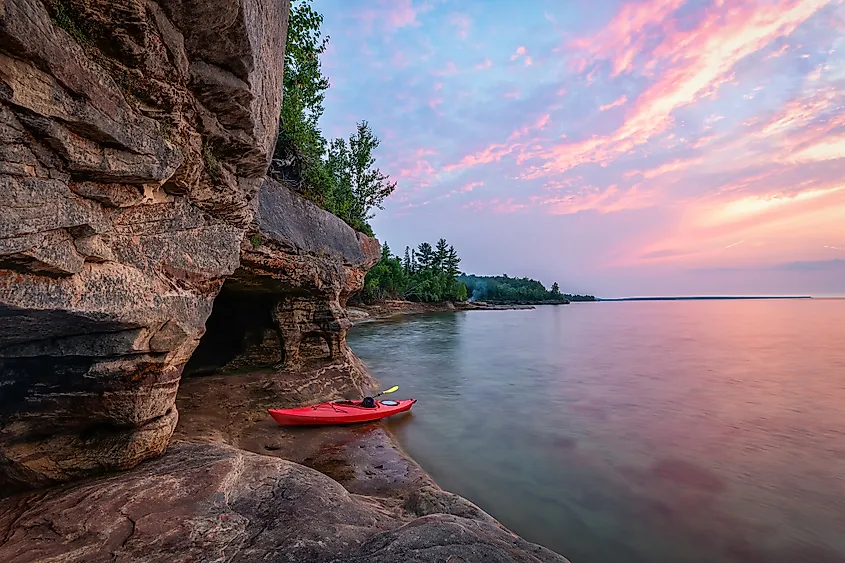
The largest lake in all of North America is Lake superior. It is one of the five Great Lakes which sit along the border between the United States and Canada. Lake Superior in particular touches the province of Ontario, as well as the states of Minnesota, Wisconsin, and the upper peninsula of Michigan. The approximate area of Lake Superior is 82,000 square kilometers, making it not only the largest lake in North America, but the world’s largest freshwater lake, in terms of surface area. Lake Superior is also quite deep, meaning it has the third largest volume of any lake in the world.
2. Lake Huron
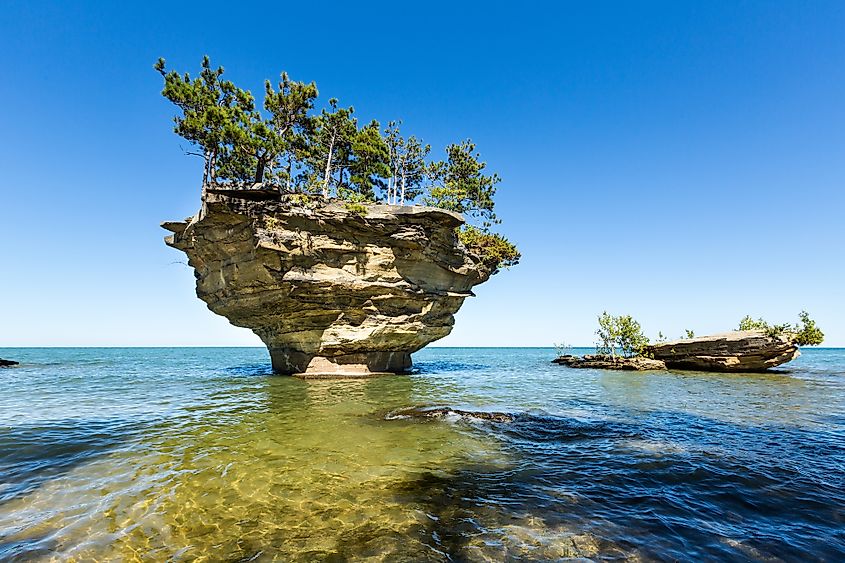
Lake Huron is the second largest lake in North America, and is also one of the United States/Canada bordering Great Lakes. It has a surface area of 59,570 km2 and sits between Ontario, in Canada, and the U.S. state of Michigan.Lake Huron is thought to be one of the ‘healthier’ and ‘cleaner’ lakes in the area, and is home to an abundance of fish. They include species such as walleye, lake sturgeon, Alewife, Lake trout, and Lake whitefish. People also enjoy the clear water of Lake Huron, and cottaging, camping, boating, swimming and fishing are all popular activities in the area. Lake Huron contains some 30,000 islands, including Manitoulin Island, which is the world's largest freshwater island, and is home to more than 12,000 residents.
3. Lake Michigan
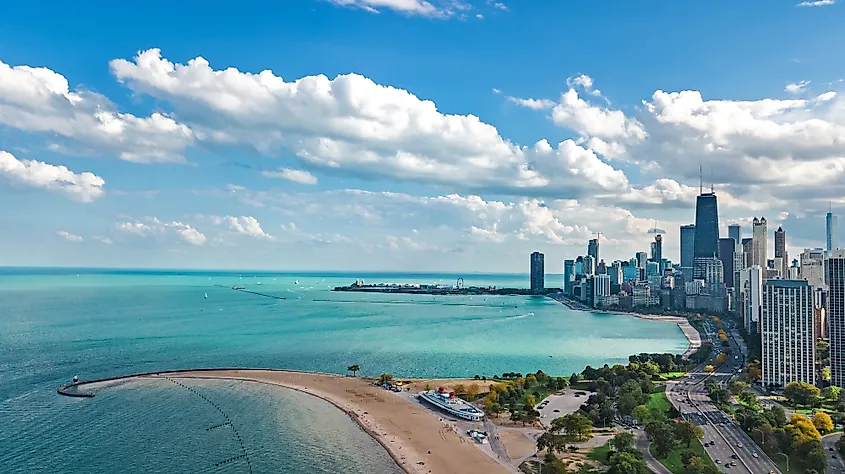
Lake Michigan measures roughly 57,757 km2 in surface area, making it the third largest on the continent. It borders several states including Illinois, Indiana, Michigan and Wisconsin making it the only Great Lake to not border Canada. Lake Michigan is an extremely popular and well populated lake. Several major cities sit along its shoes, including Milwaukee and Green Bay in Wisconsin; Chicago in Illinois; the city of Gary in Indiana; and Muskegon in Michigan.Lake Michigan’s extensive and impressive shoreline also brings many tourists to the area each year. Beach-loving visitors can enjoy the Sleeping Bear Dunes National Lakeshore and Warren Dunes State Park, as well as other boating, sailing and fishing activities.
4. Great Bear Lake
Great Bear Lake has an area of around 31,000 square kilometers, and is the largest lake entirely in Canada (i.e. not bordering with the United States). It is located in the Boreal forests of the Northwest Territories, and crosses the Arctic Circle. Due to its northern location, the lake is covered in ice during winter months, and usually frozen from November to July. When not frozen, though, the lake is known for being exceptionally clear. Though not highly populated, the community of Délı̨nę lives on the lake, and transport trucks cross the frozen ice to deliver supplies to various northern communities in and around the area. The lake also has large populations of northern fish such as Arctic grayling, Lake trout, Lake whitefish, Arctic char, which provide food sources for many in the local area.
5. Great Slave Lake
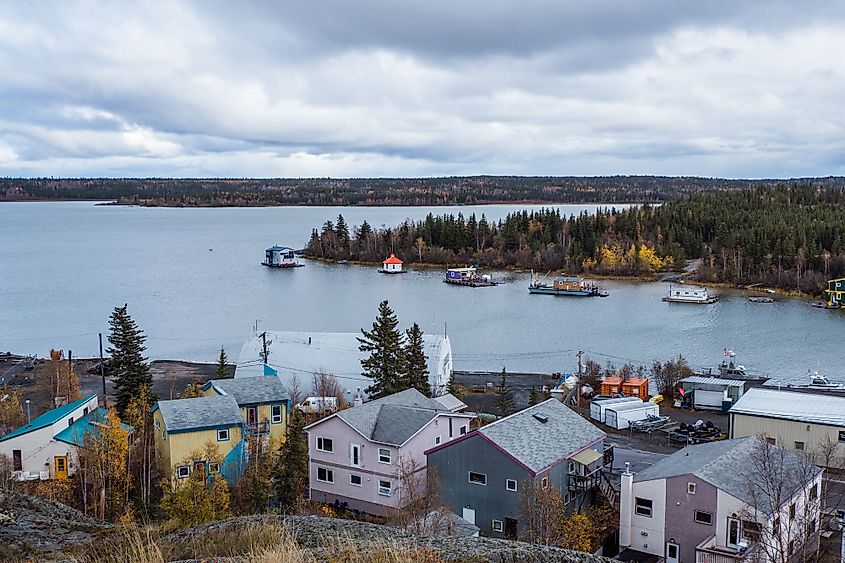
Great Slave Lake is actually the deepest lake in North America with an average depth of 41 meters, but a maximum depth of 614 meters. In terms of surface area, it is the fifth largest in North America. Like Great Bear Lake, it is located in the Northwest Territories of Canada. More than half of the population of the NorthWest territories live in five main communities around the lake, including in the territories’ capital, Yellowknife, and the abandoned winter camp of the Hudson's Bay Company post, Fort Reliance.The remote nature of the area meant it had a strong history of fur trade and fishing. Though the fur trade mainly died out, fishing is still prominent here, and species found in the lake include Arctic grayling, Lake trout, Northern pike, and Lake whitefish.
6. Lake Erie
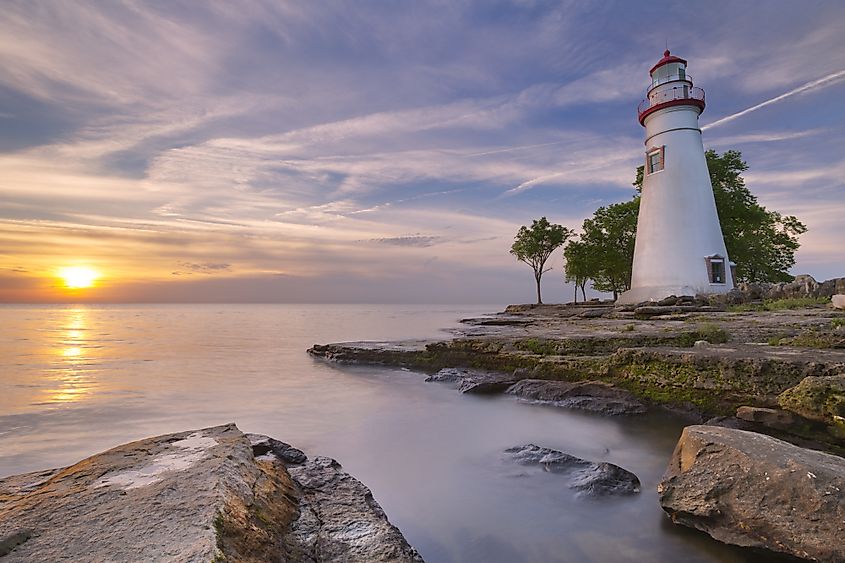
Lake Erie is yet another one of the great lakes, which makes number six on the list of largest lakes in North America. It measures a whopping 25,667 km2. It also borders several different states, inclinding Michigan, New York, Ohio, and Pennsylvania, as well as the province of Ontario. Lake Erie is an extremely populated lake, and the shores and surrounding areas contain several major cities including Cleveland, Ohio; Buffalo, New York; Erie, Pennsylvania; and Toledo, Ohio. Lake Erie is also very important within its lake system and waterway. It receives inflow from the Detroit River, and its outflow drains to the Niagara River, which is the leading source of hydroelectric power for both Canada and the United States.
7. Lake Winnipeg
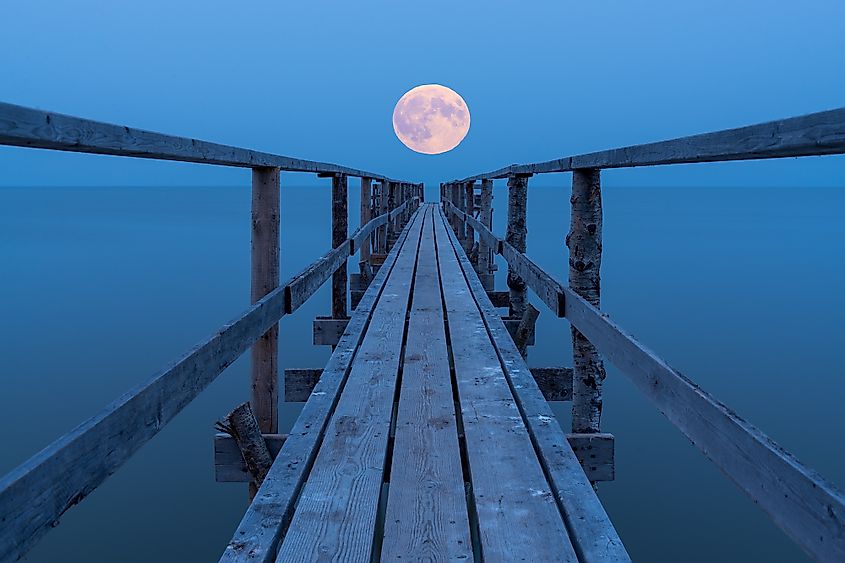
Lake Winnipeg is a large and shallow Lake in the Canadian province of Manitoba. It has a total surface area of approximately 25,514 square kilometers and a maximum depth of only 36 meters. It is best known for its beautiful white sand beaches, which are very popular with Manitoba locals in the warmer summer months. Lake Winnipeg also has an abundance of fish, and houses several important commercial fisheries. The bulk of Manitoiba’s $30 million fishing industry comes from this lake, primarily in the form of goldeneye.
8. Lake Ontario
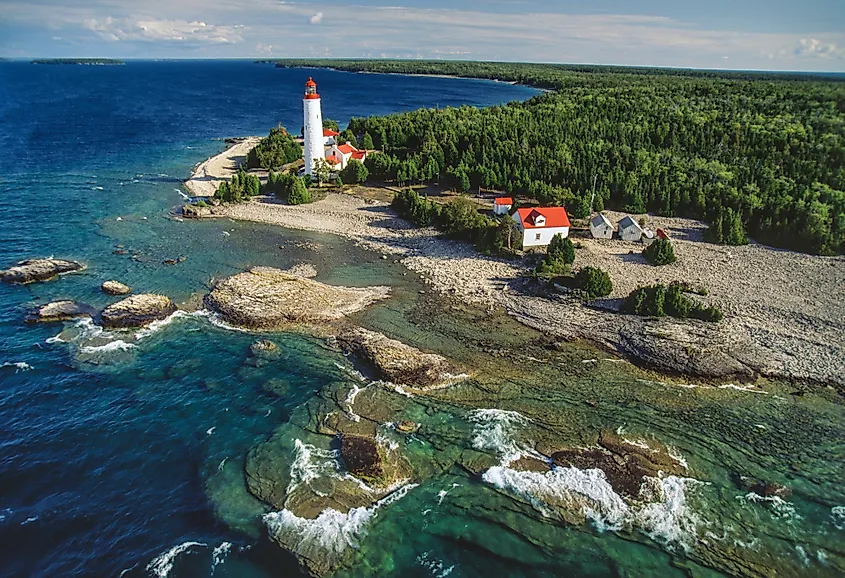
Lake Ontario is the smallest of the Great Lakes, by area, and measures 19,011 km2. Despite its name, it is not entirely Canadian, and borders both the province of Ontario, and the state of New York meaning it is the only Great Lake that does not border Michigan State. Lake Ontario holds strong significance both historically and practically for both Canada and the U.S. Its outflow is the St. Lawrence River, which leads into the Atlantic Ocean. This pathway to the ocean allows for trade ships, goods and transportation into Canada and the United States from overseas. Aside from goods and shipping, Lake Ontario provides fresh water to roughly 9 million people across Ontario and New York state.
9. Lake Nicaragua
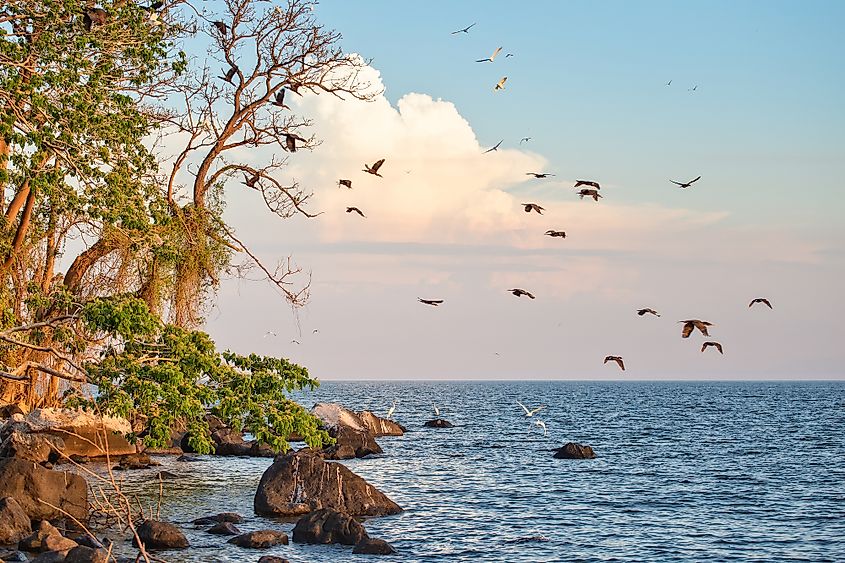
Lake Nicaragua, also known as lago Cocibolca, is a freshwater lake in Nicaragua with an average surface area of 8,264, which makes it the 9th largest in North America, and largest in Central America, despite being less than half the size of the 8th largest lake in the continent, Lake Ontario. Lake Nicaragua is also the only lake outside of the United States and Canada to rank among the top ten largest lakes in North America.
The lake is located just inland of the western coast of Nicaragua, and is unique in being the only freshwater lake containing marine animals such as bull sharks, swordfish, and tarpon, all of which can be found in the lake. Though there has been debate as to how the sharks ended up in the lake, it has been discovered that they are not trapped, but able to jump the rapids of the connected San Juan river to swim in and out of the lake when needed. Though bull sharks can be highly aggressive, the lake is still considered safe to swim in in most populated areas.
10. Lake Athabasca
Lake Athabasca clinches the number ten spot on the list with an average surface area of 7,850 square kilometers. The lake crosses two provinces, the northwest corner of Saskatchewan, and the northeast corner of Alberta, though three quarters of it lies on the Saskatchewan side of the border. The lake also sits just east of Canada’s largest National park, Wood Buffalo National Park.The lake is significant due to its fish populations, and the commercial fishing industry in the area forms the primary economy for the region. Species such as Goldeye, Lake trout, Northern pike, Walleye, Yellow perch all reside in these fresh waters.
From the Arctic Circle to the coast of Nicaragua, these lakes make up the largest lakes in North America. They provide everything from fresh drinking water to hydro power, and fishing jobs io their local inhabitants, as well a off recreational sites and beauty to visitors from near and far.
